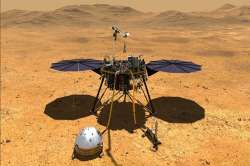NASA's new Mars rover InSight set to unveil story of solar system's origin
By studying the preserved heart of Mars, InSight can teach us how our solar system’s rocky planets formed 4 1/2 billion years ago and why they turned out so different.

US space agency NASA's new Mars lander is set to reveal the history of our solar system. Designed to study Mars’ deep interior, including red planet's internal heat, quakes, meteorite strike, InSight will help humans better understand the origin of planets.
Scientists consider Mars a tantalizing time capsule. It is less geologically active than the twice-as-big Earth and so retains much of its early history. By studying the preserved heart of Mars, InSight can teach us how our solar system’s rocky planets formed 4 1/2 billion years ago and why they turned out so different.
“Venus is hot enough to melt lead. Mercury has a sunbaked surface. Mars is pretty cold today. But Earth is a nice place to take a vacation, so we’d really like to know why one planet goes one way, another planet goes another way,” said InSight’s lead scientist Bruce Banerdt of NASA’s Jet Propulsion Laboratory in Pasadena, California.
NASA has another project in pipeline. The space agency will start looking for evidence of ancient microbial life on Mars in two years of time. On Monday, the space agency announced Jezero Crater as the landing site for the Mars 2020 rover, which will gather samples and stash them for return to Earth in the early 2030s. The crater’s ancient lake and river system is brimming with diverse rocks, making it a potential hot spot for past life.
(With inputs from agencies)